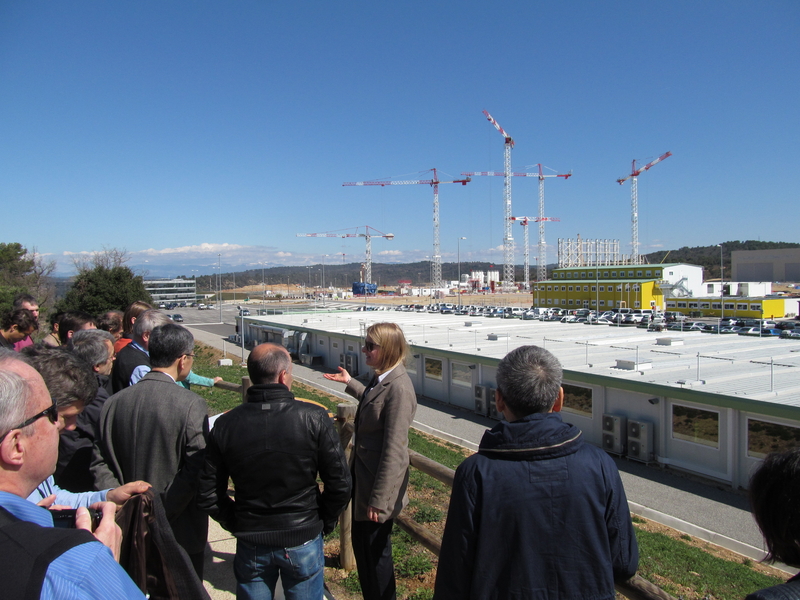From 24-26 March, Barcelona Supercomputing Center (BSC) researchers Shimpei Futatani and Mervi Mantsinen participated in meetings at ITER, the international collaboration to develop fusion energy, located in Cadarache, south of France. Fusion energy is released when hydrogen nuclei collide, fusing into heavier helium atoms and releasing tremendous amounts of energy in the process. ITER is constructing a tokamak device for the fusion reaction, which uses magnetic fields to contain and control the plasma – the hot, electrically charged gas which is produced.
Shimpei and Mervi are providing expertise for ITER on the mitigation of Edge Localised Modes (ELMs) in ITER and attended the first progress meeting for this research, where they were commended on their progress. ELMs are instabilities that can occur at the boundary of the fusion plasma. They are problematic because they can release large amounts of energy to the reactor wall and, consequently, damage it. The BSC researchers are investigating, via computer modelling, one of the most promising methods for ELM mitigation in ITER. This is based on the injection of small pellets, i.e. tiny deuterium ice cubes, to induce small and less-dangerous ELMs before large and more damaging ELMs occur.
During their time at the ITER headquarters in France, the researchers took also part in the 14th meeting of the Energetic Particle Physics Topical Group of the International Tokamak Physics Activity (ITPA), which included a visit to the impressive ITER construction site.

Team of the ITER-BSC Expert Contract. Right to left: Alberto Loarte, Guido Huijsmans (both ITER), Shimpei Futatani (BSC) and Mervi Mantsinen (ICREA-BSC)

Credit © ITER Organization, 2015
Participants in the 14th meeting of the Energetic Particle Physics Topical Group of the International Tokamak Physics Activity (ITPA), ITER, France.

The ITER construction site in Cadarache, France.
